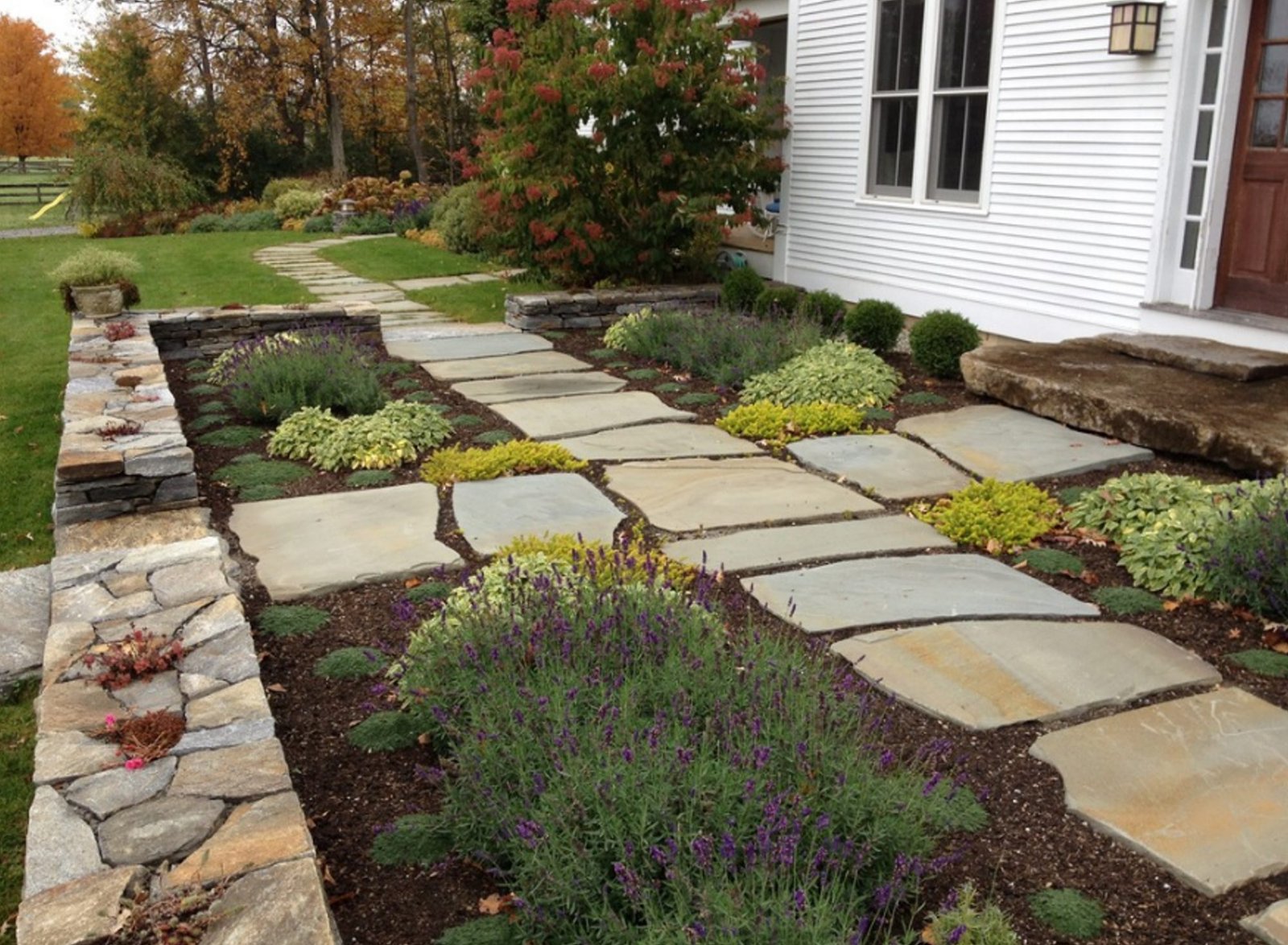Every homeowner loves his garden and nothing shows this more than a beautiful, flat cared for lawn. A good lawn starts with good soil. Actually, the hard part of laying turf is in the preparation of top soil. Topsoil is the surface layer of soil found in a garden or in nature, where the majority of microbial activity occurs and where most nutrients can be found.

By Benjamin Vogt / Monarch Gardens Lincoln – See more Home Design Photos
Do you know that it takes 500 years for 1 inch of topsoil to develop in a natural setting?
A proper site preparation and soil improvement prior to planting make it easier for the grass roots to penetrate deeply and evenly.
The new turf will grow best when the soil is prepared so it encourages deep and rapid rooting. Deep roots make lawns more drought tolerant, more water efficient and better able to access available nutrients. To create this we must decide to put in the work and effort necessary.
You can lay turf all year round; however the best times to lay turf are between March-June and September-November.
To prepare the ground the soil should be checked and if necessary put down new topsoil.
-Relative to most other plants, grass does not need a very deep topsoil layer to grow, as its root structure is fairly shallow. So, you really need a minimum of 4″ or 10cm to 6″ 15cm of good quality top soil. Eight inches should be more than sufficient for any grass species.
-The best soils for healthy turf are loams, sandy loams and loamy sands with a pH of 6.0 to 7.0. They produce a beautiful, high-use, low-maintenance lawn.
– For optimum growth, turf needs just four things; sunlight, air, water and nutrients.
-A proper and complete soil preparation improves uniformity, increases density, reduces use of water, fertilizer, & chemicals and reduces maintenance.
– Practically without exception, soils can be improved, to get the maximum results with only a minimum of other on-going effort. Incorporate humus (fully decomposed organic matter) into the topsoil to the extent possible.
– The level of acidity or alkalinity in your soil will determine the type and amount of soil amendment needed.
Laying Turf:
1/ Rake the entire surface of the area to make sure it is level and clear of debris.
2/ Rough grade the entire area to eliminate any drainage problems on the property. This would include sloping the grade away from building foundations, eliminating or reducing severe slopes and filling low-lying areas.
3/ Test the soil pH; the level of acidity or alkalinity in your soil will determine the type and amount of soil amendment needed.
4/ Roll the area with a lawn roller one-third full of water to firm and settle the surface.
5/ Lay the turf along a straight edge and add subsequent rows, make sure they are butted up to each other and lightly press them down. The turf should always be pushed together and never stretched, soil can be used to fill small gaps.
6/ During the first four weeks the lawn should be watered constantly until the new lawn has rooted.
7/ Avoid excessive walking on the turf especially at the early stages and after about two weeks give the lawn its first cut. Try and cut about one quarter of the length of the grass during each trim at this stage, progressively taking more off as the lawn matures.
Beautiful Gardens | How To Build A House (howtobuildahouseblog.com)


